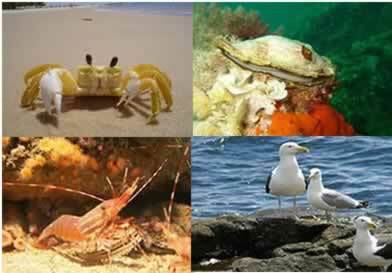Found at various points on the Brazilian coast, the mangrove is a transitional coastal biome, located between the terrestrial and marine environment. It is an ecosystem that is associated with the margins of bays, creeks, bars, river mouths, in short, where there is a meeting of the fresh waters of rivers with the waters of the sea. This encounter of water causes an accumulation of organic particles, and the formation of flooded areas with a muddy, brackish and poorly ventilated bottom. Because of these conditions, the plant species in this biome are limited to just three: red mangrove (Rhizophora mangle), seriba mangrove (schauerian avicennia) and white mangrove (racemose lagoon).
The plant called the red mangrove is easy to be identified, as it has roots that come out from various heights of the stem and branch out into the ground to get better support. The plant known as the seriba mangrove, on the other hand, has vertical ramifications of its roots, called pneumatophores, which serve to collect oxygen from the air.

Figure 1: anchor roots of the red mangrove plant; Figure 2: Seriba mangrove pneumatophores
The mangrove is an extremely important biome for the reproduction of a large number of marine, terrestrial and freshwater species, which is why it is called by many the nursery of life. In the mangrove swamp we can find molluscs, crustaceans (shrimps, crabs), fish, birds (seagulls, herons, vultures, flamingos, hawks etc.), alligators and mammals. Animals such as crabs and oysters always live in the mangroves, while other animals spend only a part of their life in the mangroves.
In addition to serving as a nursery for the animals, the mangroves also serve to cushion the impact of the tides and to contain the sediment brought in by the rivers, thus preventing the siltation of the beaches.

The mangrove is home to species of animals that use it for reproduction
The mangrove is a very economically productive biome, as the populations that live close to these regions support their families with what comes from the mangrove. In addition, because it is a biome rich in organic matter and mineral nutrients, the mangrove becomes a food source for species of animals and even for man, as a large number of fish, molluscs, crustaceans and birds obtain their food through the mangroves.
By Paula Louredo
Graduated in Biology



